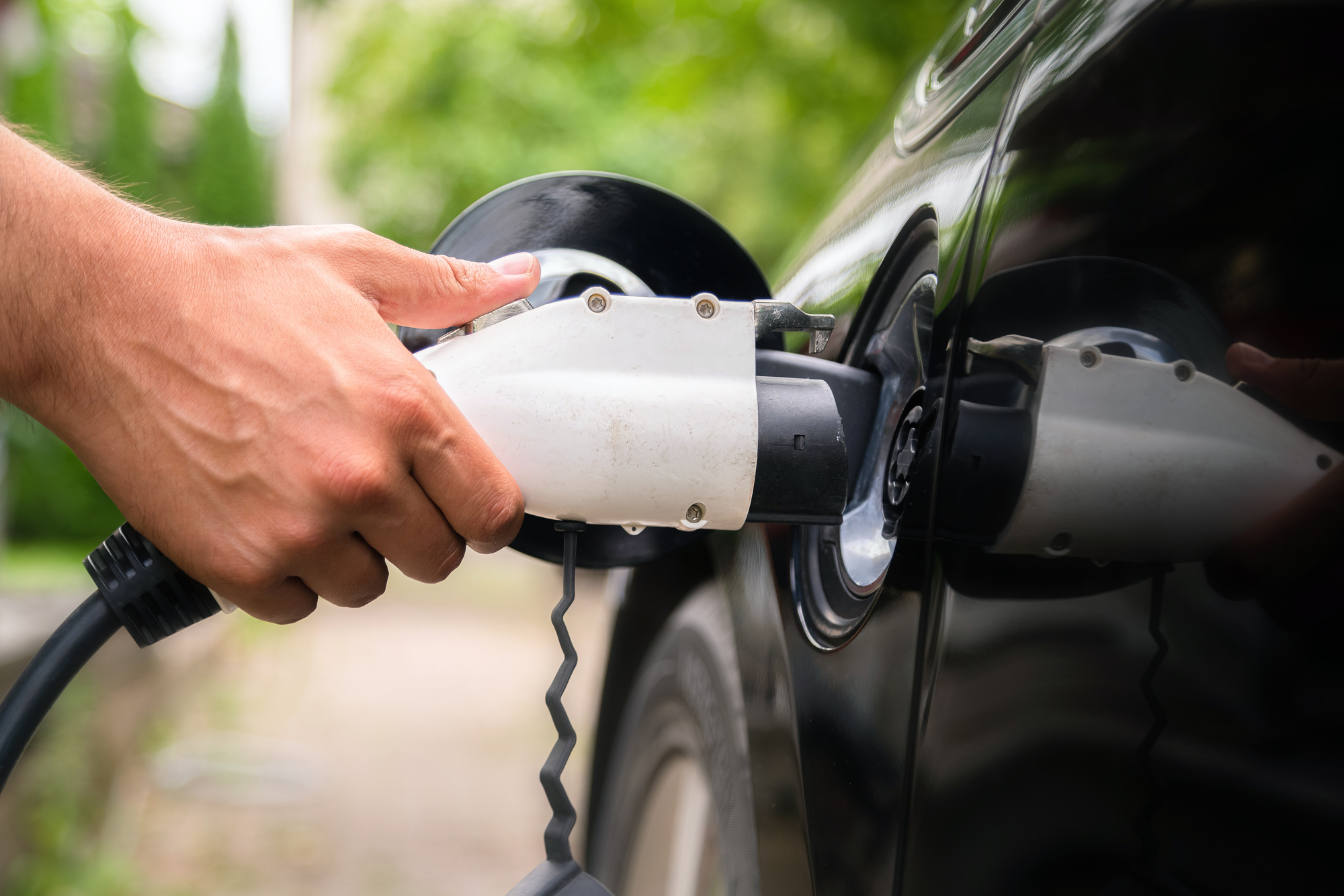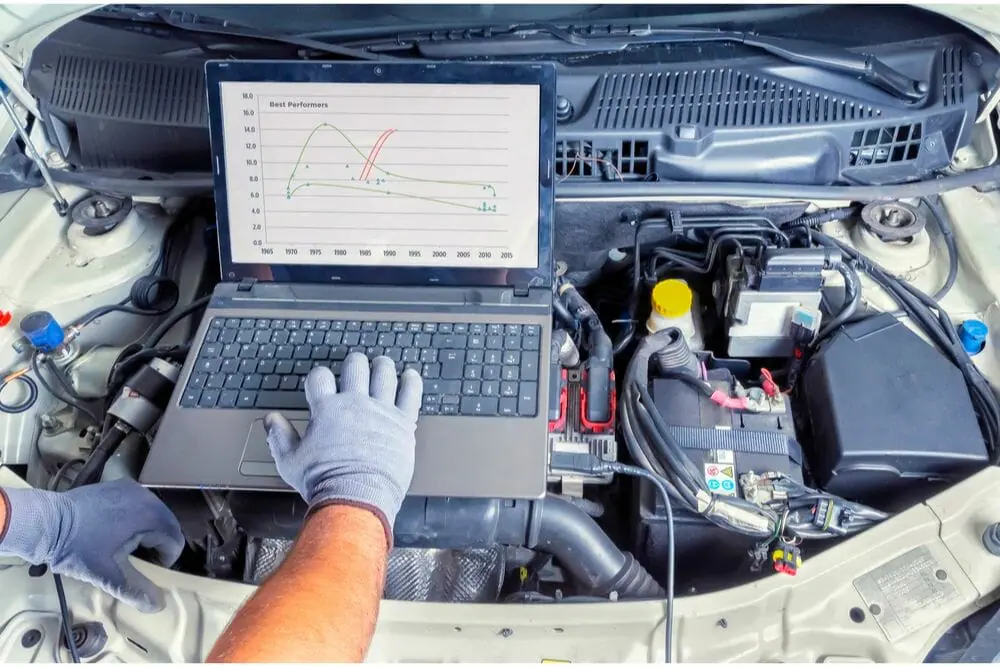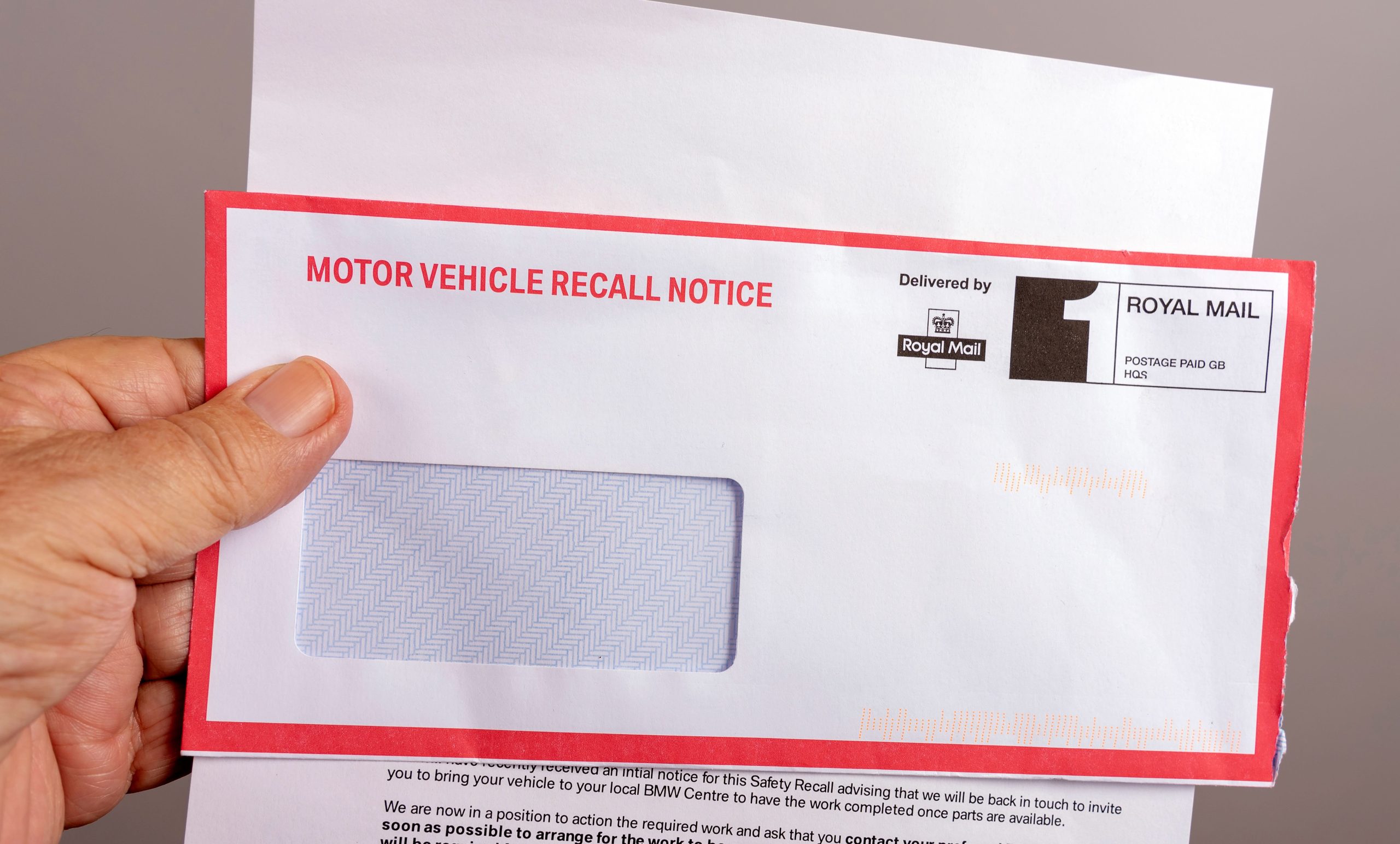Why does my car make noise when I turn?


Cars produce abnormal noises when turning due to several causes. Issues with the suspension system like worn shocks, damaged ball joints, or bushings can create clunking noises. Broken power steering pumps may also lead to whining sounds. Worn-out CV joints and axles can generate clicking or crunching sounds. Vibrations while turning may be due to uneven tires or problems with braking systems.
Moreover, drivers must always pay attention to the nature of the noise their cars produce while making a turn. For instance, a grinding sound may indicate that there is an issue with brake pads or rotors. Squealing sounds may occur when brake pads require replacement.
It is essential to maintain regular maintenance intervals and inspections of brake systems for optimal performance and safety while driving on roads. In addition, drivers must replace parts like shocks, struts, and other worn-out parts that often cause noticeable noises while turning the vehicle. Preventive measures are crucial for complete avoidance of future issues with car noises during turns.
Steering system issues
To diagnose the source of the noise in your car when you turn, check your steering system. Loose or worn power steering belt, low power steering fluid levels, a faulty power steering pump, a damaged steering rack or tie rods, and a misaligned steering column could all be contributing factors. Let’s dive deeper into each sub-section and find out how to fix these problems.
Loose or worn power steering belt
The power steering belt can cause serious steering system issues. A worn or loose belt can result in increased vibration and difficulty turning the steering wheel smoothly. Additionally, a damaged or neglected belt may create a whining noise from the power steering pump.
Proper maintenance of the power steering system is essential to avoid these problems. It’s critical to check the power steering belt’s condition regularly and replace it if necessary. You should also inspect other components such as tensioners, pulleys, and hoses since faulty parts can contribute to premature wear of the belt.
Not only can a worn power steering belt hamper your driving experience, but it also poses safety risks that you don’t want to ignore. Therefore, opt for quality belts, made from high-quality materials that ensure durability and dependable performance.
According to reliable sources like Car Talk and AAA,America-based clubs offering roadside assistance, ignoring the warning signs of a failing power steering system will result in costly repairs – so Stay safe on the road!
Low power steering fluid levels
Insufficient levels of power steering fluid can lead to potential issues with the steering system. This could arise due to decreased lubrication and protection, which could cause damage to components such as the power steering pump or rack and pinion. In turn, this could result in increased effort required while turning the wheel, as well as a creaking or groaning noise originating from the system. It is crucial to maintain recommended levels of fluid by conducting regular checks using a dipstick or assessing through the reservoir’s translucent material.
Additionally, it is vital to identify the type of power steering fluid that is compatible with your vehicle’s specifications before topping up. Using an incorrect type can lead to malfunction or even failure of the system. Therefore, always refer to your vehicle handbook or seek expert advice before undertaking any maintenance activities related to the power steering fluid.
When neglecting these crucial checks, you are putting yourself at risk of experiencing detrimental failures in your steering system that could be dangerous and expensive to fix. Prevention is more effective than cure when it comes to avoiding mishaps on the road. Hence, maintaining optimal levels of power steering fluid should be a priority when completing routine car maintenance procedures.
Faulty power steering pump
One major issue that can arise in a vehicle’s steering system is related to a malfunctioning power steering system. This can occur due to a fault in the power steering pump, which is responsible for providing hydraulic pressure to assist in turning the wheels of the vehicle. A faulty power steering pump can cause problems with controlling the directionality and stability of the automobile, leading to serious safety concerns on the road.
To identify issues with a failing power steering pump, it is important to pay attention to any unusual noises or vibrations while driving. Additionally, difficulty navigating turns or feeling resistance when turning the wheel may be signs of an issue. Prompt attention and repair is necessary to avoid potential accidents and costly damages.
In some cases, replacing a faulty power steering pump may not be enough to completely alleviate problems with the vehicle’s handling. Other components in the steering system, such as hoses or belts, may also need attention. It is crucial for mechanics and drivers alike to perform regular inspections and maintenance of all parts related to the functioning of the power steering system.
One driver shared experiences of struggling with their car’s erratic behavior on curves that almost led them into collisions until they took their car for a checkup by their mechanic who discovered that it was caused by a damaged power steering pump. Swift action from a mechanic saved both lives and spare parts expenses prompting us all once again about routine servicing that should never be ignored.
Damaged steering rack or tie rods
When the steering system encounters issues, it can stem from a problem with the rack or tie rods. These components work together to allow the wheels to turn and move in unison. The following points further explain this issue without directly stating ‘damaged steering rack or tie rods‘.
- Rack and pinion systems use fluid pressure to move gears that steer the front wheels.
- Tie rods transmit force between the steering rack and steering arms.
- Bent or damaged tie rods can cause uneven tire wear, wandering steering, and imprecise handling.
- Damaged power steering hoses or seals can cause leaks that affect performance.
- A worn out bushing may cause a clunking noise when turning the wheel.
It’s important to note that while these issues are concerning, they can be resolved rather easily through maintenance by an experienced automotive technician who can inspect and replace parts accordingly.
As a car owner, it’s crucial to stay up-to-date on regular vehicle maintenance and heed warning signs of mechanical failure. Neglecting these indicators could lead to costly damages and even increase chances of accidents on the road. Stay vigilant in upkeep to ensure your safety as well as that of other drivers.
Misaligned steering column
The steering system in a vehicle is comprised of various components working in harmony. However, if the steering column is out of alignment, it can cause significant problems with the car’s handling and maneuverability. The misalignment occurs when one or more of the steering components are damaged or improperly fitted, leading to uneven movement of the wheels.
This issue can be caused by numerous factors, including collision damage, wear and tear, and improper installation. If left unaddressed, it may result in irregular tire wear and reduced steering control, plus an increased risk of accidents. A misaligned steering column should be inspected quickly and repaired promptly to avoid more severe problems.
One unique detail about this issue is that it can be challenging to detect because any minor deviation from proper alignment may go unnoticed by the driver. Instead of relying on visual cues such as uneven tire wear or shaking while driving, drivers should look for subtle symptoms like resistance in the steering wheel while turning.
In 2018, a recall was issued for over 1 million Kia vehicles due to power-steering assist failures that could cause sudden changes in the level of effort required to turn the wheel correctly. This event serves as an example of how a miscalibrated steering system can be dangerous and why preventing misalignment is crucial for safety reasons.
Suspension problems
To address your car’s noise problem during turns, we need to look at the suspension system. Worn or damaged ball joints, faulty shock absorbers or struts, damaged control arm bushings, or broken sway bar links could be the culprit. In this section, we’ll briefly explore each sub-section to find a solution to your problem.
Worn or damaged ball joints
The issue of ball joints that are worn or damaged can be a cause for concern among vehicle owners. This problem, if left untreated, can lead to severe consequences such as reduced steering control and increased tire wear.
- One point is that ball joints are an essential component of the suspension system, and they serve as a connection between the steering knuckle and control arm.
- A second point worth mentioning is that worn or damaged ball joints may lead to uneven tire wear since they impact wheel alignment.
- In addition, suspension noises such as clunks or squeaks during driving could be other potential indications that you have worn or damaged ball joints.
Another critical detail to remember is that this problem may arise due to age, overuse, natural wear and tear, or even accidents. Therefore it is necessary for drivers to keep up with routine inspections and timely repairs before it becomes too late.
According to Car Bibles magazine, “If left unchecked for long enough, worn-out ball joints may eventually break apart completely causing severe damage to your vehicle’s suspension system.” Thus, it’s vital for car owners to remain vigilant regarding the maintenance of their vehicles’ ball joints.
Faulty shock absorbers or struts
The issue with the dampening elements in a vehicle’s suspension system can lead to serious problems that affect driving comfort and safety. These faulty shock absorbers or struts can cause the vehicle to bounce excessively, giving occupants an uncomfortable ride.
- One of the first signs of this problem is a noticeable decrease in handling performance.
- Another consequence of this issue is increased wear on other suspension components like tires, springs, and bushings.
- In severe cases, maneuvering becomes difficult as wheels lose directional control while braking or turning.
Aside from these issues, it is important to note that proper maintenance is key to preventing damage-related repair costs later on. Scheduling regular check-ups and inspections with experienced technicians can minimize risks associated with automotive malfunctions resulting from worn-out shock absorbers or struts.
Don’t put off vehicle maintenance any longer! Neglecting repairs on faulty suspension systems can put you and your loved ones’ safety at risk. Get your car looked at by a trustworthy mechanic today and ensure peace of mind on the roads ahead.
Damaged control arm bushings
Control arm bushings, when damaged, can cause suspension problems in vehicles. Here are three points to explain the issue:
- Faulty control arm bushings can lead to a decrease in steering precision and stability of the vehicle.
- Worn out or damaged bushings can cause increased tire wear and uneven tire patterns.
- A clunking noise coming from the front wheel area is an indication of faulty control arm bushings.
Unique details regarding this problem include the fact that it can occur on both new and old vehicles alike. Furthermore, regular maintenance checks for suspension components are essential to detect worn-out bushings before they cause significant damage.
To address this issue, either replace the entire control arm assembly or just the worn-out bushings. Replacing the complete assembly is suggested for older vehicles where all parts may be worn out. Alternatively, if only a few components are damaged, replacing just those parts can be economical and efficient. Regular inspection and maintenance of these suspension system parts is advisable to prevent suspension-related issues in your vehicle.
Broken sway bar links
Sway bar links are crucial suspension components that connect the sway bar to the control arm. When these links break, it can lead to serious suspension problems.
- Broken sway bar links can cause excessive body roll during cornering
- It can also lead to instability while driving on uneven terrain.
- The vehicle may experience a clunking or rattling noise when driving over bumps,
- the steering may feel loose, and tires may wear unevenly.
- Once the sway bar link breaks, it puts stress on other suspension parts like shock absorbers and ball joints.
- To prevent further damage, it’s essential to get them repaired as soon as possible.
It’s important to note that broken sway bar links don’t always produce visible symptoms; sometimes these issues are recognized on routine inspections.
To be on the safe side, car owners should get their suspensions checked out from experienced professionals. They have specialized sensors to detect if any part of a car’s suspension system is off or needs replacement.
To address broken sway bar links promptly and effectively:
- Take your vehicle to a trusted repair shop or a technician who has expertise in this area.
- Replace all worn-out components simultaneously instead of piecemeal replacements of individual parts.
- Genuine spare parts must replace original equipment manufacturer (OEM) parts.
Following such advice will ensure safety and dependability for both driver and passengers alike while operating an automobile.
Brake system issues
To address brake system issues with your car, specifically worn or damaged brake pads, warped or worn brake rotors, and loose or damaged brake calipers, it’s important to understand the possible benefits of each of these sub-sections. Each sub-section offers unique insights into the potential causes behind noise during turns and the subsequent benefits of resolving any issues in this area.
Worn or damaged brake pads
Worn Brake Pads – An Important Brake System Issue
The brake system of a car ensures safety while driving. One of the major issues with the brake system is worn or damaged brake pads. This issue can have a significant impact on vehicle safety, and should be addressed promptly.
- Worn out or damaged brake pads will cause poor braking performance, which can increase stopping distance and lead to accidents.
- Noisy brakes are another sign of worn out or damaged brake pads. The noise may be a squeaking, grinding or screeching sound that occurs when you press the pedal.
- Uneven wear is also a sign of worn out or damaged brake pads. This occurs when one pad wears faster than the other.
- Heat damage can also occur to brake pads over time as they wear down from continued use leading to poor braking power
- The lifespan of brake pads depends on various factors such as driving style, frequency of usage and material composition used in making the brake pad itself. Some manufacturers produce long-lasting brake pads than others
It is important to check your brakes regularly for signs of wear and tear as early identification before it becomes a major issue can save huge troubles.
Damaged brakes could become more expensive if there is delayed action.
Once my aunt was driving her kids back home from school at moderate speed when a kid ran across the road in front of them chasing his ball into the street. She panicked and slammed on the brakes only for them to give away with an alarming screech! She’d never had trouble with her brakes before, so this came as quite a shock. Fortunately for her, she hadn’t been going too fast; otherwise, there would have been serious consequences. That experience taught her never again to take brakes for granted without performing regular checks every six months.
Warped or worn brake rotors
When brake rotors suffer from an irregular surface, it can lead to various issues in the braking system of a vehicle. Such irregularities may include unusual grooving, warping, and wearing. Let’s explore how these problems can occur and impact the performance of your car.
- Warped or worn brake rotors may cause vibrations that are felt through the steering wheel when brakes are applied.
- The presence of warped or worn brake rotors can negatively affect stopping power, increasing the distance required to stop the vehicle.
- Squeaking and squealing noises may be heard due to increased friction caused by damaged surfaces.
- The abnormality on the surface of the rotor may cause uneven wear on brake pads resulting in their replacement more frequently than normal.
- Lack of care and maintenance increases the chances of brake rotor damage; such as extreme temperatures during driving or excess moisture exposure.
- Brake systems showcasing symptoms mentioned above should not be left unattended as they may cause further damage leading to expensive repairs.
Overall, ignoring issues with warped or worn brake rotors is risky business as it impairs road safety for you and others around you. In case such symptoms appear in vehicles’ braking systems, have them repaired immediately by a mechanic with expertise in auto repairs.
Repairing problematic components like brake rotors promptly will aid in avoiding any further complications down the line for faults previously left unaddressed.
Loose or damaged brake calipers
- The caliper may not be centered or attaching properly leading to brake drag.
- Excessive vibration and noise while braking could mean that the caliper is loose and impacting the rotor.
- A damaged piston seal in the caliper can lead to fluid leakage and reduce the effectiveness of the brakes.
- A stuck caliper can wear out a brake pad faster than normal resulting in uneven braking.
It is important to note that routine maintenance and inspection is necessary for proper brake function. Neglecting such checks could result in catastrophic accidents.
Avoid taking your car’s safety for granted. Ensure timely maintenance, and inspect brakes regularly to nip potential issues like these in their buds before it’s too late.
Why does my car make noise when I turn? – Conclusion
When your car makes noise while turning, it could be due to various reasons. One possible reason is an issue with the steering system or suspension components. This can include worn out ball joints, tie rods, or bushings. Another cause could be a problem with the power steering fluid or belt. It’s important to get your car checked by a professional mechanic to properly diagnose and fix the issue.
In addition, noises can also be caused by worn-out brake pads or rotor damage, leading to scraping or grinding sounds when turning. Alternatively, if your car makes clicking sounds when turning, it could indicate problems with the CV joint.
A true story that exemplifies these issues is that of a driver who noticed a clunking noise every time they turned their car. After taking it in for inspection, they found out that their ball joints were worn out and needed replacement. The repairs not only eliminated the noise but also improved the overall driving experience.
Why does my car make noise when I turn – Frequently Asked Questions
Q1: Why does my car make noise when I turn?
A1: There are several reasons why your car might make noise when turning, including low power steering fluid, worn-out steering components, and damaged wheel bearings. It’s important to have your car inspected by a mechanic to diagnose the specific issue.
Q2: Can I continue driving my car if it’s making noise when turning?
A2: It’s best not to continue driving your car if it’s making unusual noises when turning, as it can be a sign of a serious problem that could compromise your safety on the road. Get your car checked out by a professional mechanic as soon as possible.
Q3: How much will it cost to fix my car if it’s making noise when turning?
A3: The cost of repairing your car’s turning noise will depend on the specific issue causing the noise. Typically, replacing a worn-out steering component can cost between $200 and $400, while damaged wheel bearings can cost between $300 and $700 to repair or replace.
Q4: Can I fix my car’s turning noise myself?
A4: If you’re an experienced mechanic, you may be able to diagnose and fix your car’s turning noise yourself. However, it’s recommended that you have your car inspected by a professional mechanic to ensure that the correct repairs are made.
Q5: How often should I have my car’s steering components and wheel bearings inspected?
A5: It’s recommended that you have your car’s steering components and wheel bearings inspected at least once a year or every 12,000 miles. However, if you notice any unusual noise or vibration when turning, you should have your car inspected by a mechanic right away.
Q6: What should I do if my car’s turning noise persists after repairs?
A6: If your car’s turning noise persists even after repairs are made, it’s important to have your car re-inspected by a mechanic to diagnose any underlying issues that may be causing the noise. This can help prevent further damage to your car and ensure your safety on the road.











[…] between the car’s wheels depends on the number of axles it has. This distance affects how well a car handles turns and […]
[…] Turn your car key back one notch so that all electrical components are switched off. […]
[…] fix the rattling noise when you turn on your car, you need to address the root cause. To do that, you can take several approaches. Tightening or […]
[…] fix them promptly with a reliable solution. Regularly monitoring the condition of protected leather car seats helps ensure that you catch potential problems before they turn into bigger […]
[…] solve your mechanical issues with your car creaking when you turn, we address the section on ‘Mechanical Issues. One common cause could be worn-out suspension […]
[…] you turn off the car battery, make sure your music selection won’t leave you singing the […]